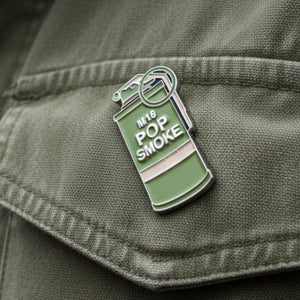Celebrations and Uncertainty as Assad Regime Falls in Syria
The Assad regime in Syria fell as Hayat Tahrir al-Sham rebels captured Damascus, prompting nationwide celebrations and raising uncertainty about the country's future.

Syria, grey, human, and person in Syria by hosein charbaghi (@hoseinchaharbaghi) (Unsplash)
Jubilant Syrians celebrated Monday as the Assad regime's decades-long grip on the country ended with rebel forces capturing Damascus, marking the culmination of a rapid nationwide offensive led by Hayat Tahrir al-Sham (HTS).
Across the capital, citizens climbed abandoned tanks, waved flags, and took selfies in front of toppled government symbols. Portraits of ousted President Bashar al-Assad were defaced and torn down, while crowds in Damascus and beyond chanted “Hurriyah! Hurriyah!”—Arabic for “Freedom!”
Gear Spotlight: Relevant to This Story


In a symbolic act just outside Damascus, a massive statue of Hafez al-Assad, Bashar’s father and predecessor, was pulled down and dragged through the streets by a cheering crowd. Meanwhile, Syrians looted abandoned government buildings, including Assad’s palaces, removing furniture and eyeing luxury vehicles left behind.
Assad fled to Russia with his immediate family, securing asylum under longtime ally Vladimir Putin. Russia’s foreign ministry confirmed the arrangement, stating Assad had “decided to leave the presidential post” after negotiations with rebel leaders.
Ahmad al-Sharaa, better known as Abu Mohammad al-Jolani, leader of HTS, arrived in Damascus shortly after Assad’s departure. Wearing military fatigues, he addressed Syrians at a mosque, urging his forces to avoid harming civilians and to refrain from looting. Jolani also vowed to release prisoners from Assad’s notorious jails, a promise fulfilled as thousands were freed, many having endured years of torture.
Despite his reassurances, al-Jolani’s leadership raises concerns due to HTS’s history as a former Al Qaeda affiliate, designated as a terrorist organization by the U.S. and United Nations. Observers are wary of whether Syria is trading one authoritarian regime for another.
President Joe Biden called the fall of the Assad regime a “moment of historic opportunity” for Syria’s people while cautioning against risks during the transition. He reiterated U.S. support for a UN-led process to establish a new Syrian government.
President-elect Donald Trump, however, expressed a starkly different stance, urging the U.S. to stay out of the conflict. Writing on Truth Social, Trump stated, “This is not our fight. Let it play out.”
Neighboring Israel also moved to secure its border, deploying forces to the Golan Heights buffer zone while emphasizing its neutrality in Syria’s internal developments.
In a bid for unity, al-Jolani promised not to persecute civilians or low-level government workers who served the Assad regime. He also pledged respect for Syria’s diverse religious and ethnic groups, including the Alawites, a minority sect historically aligned with the Assads.
Prime Minister Ghazi al-Jalali announced his intent to remain in Syria and ensure the continuation of government services, declaring readiness to cooperate with leadership chosen by the Syrian people. Elders in Qardaha, the Assad family’s hometown, pledged to work with the new government, calling for the removal of Assad-era statues and portraits.
The fall of the Assad regime has raised questions about the return of nearly 7 million Syrian refugees who fled during the civil war. European countries, including Britain, Germany, and Finland, have temporarily suspended decisions on Syrian asylum applications. Poland, set to assume the EU Council presidency in January, announced it is reviewing migration policies in light of Syria’s political changes.













